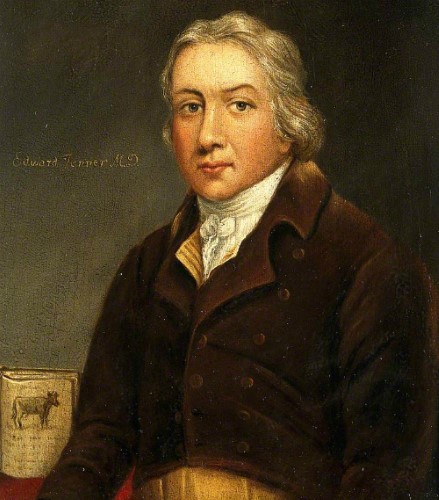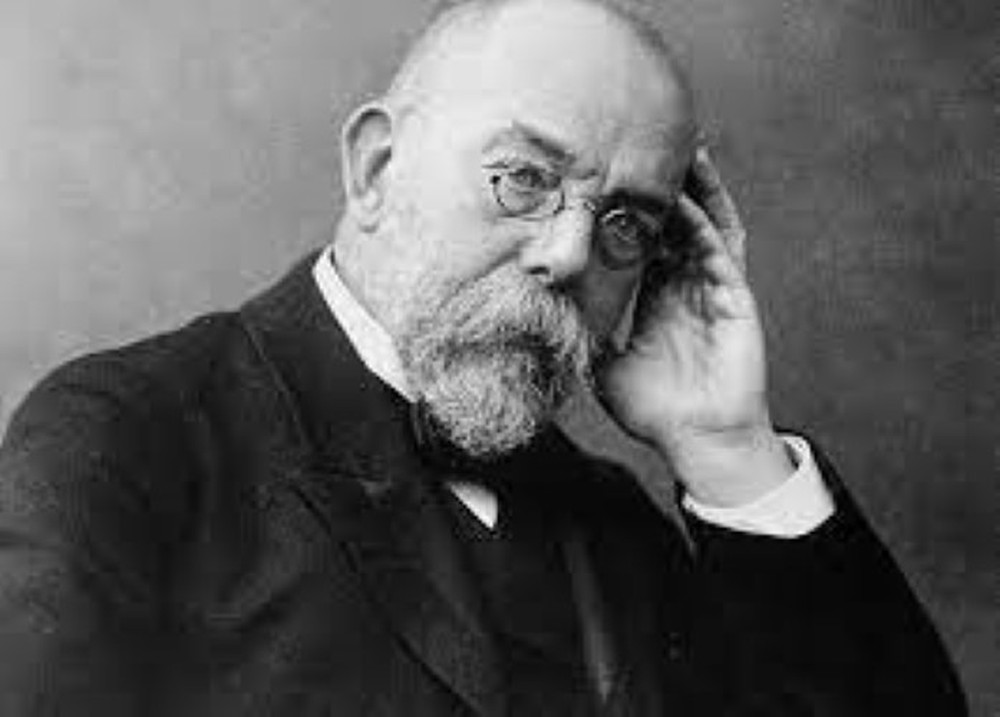1. Edward Jenner

Edward Jenner – The first person to lay the foundation for vaccination.
Louis Pasteur is recognized worldwide as the father of Vaccine. However, in fact, the person who first laid the foundation for vaccination was Edward Jenner – an honorary doctor in the Royal Society of London (UK). World medical history recorded
Edward Jenner has great credit in establishing a vaccine “empire” that helps protect billions of people. In 1796, epidemic Smallpox outbreak in Europe. At that time, no scientist had a concept of a virus. In 1798, doctor Edward Jenner published the results of an experiment that laid the groundwork for vaccination.
Apartment smallpox appeared a long time ago in human history, becoming a pandemic from the 6th century, originating in Africa, then spreading to Europe and Asia. During the 17th and 18th centuries, smallpox claimed the lives of millions of people. Smallpox is caused by a virus, but doctors who lived before Louis Pasteur had no idea about this problem. They believe that this is an incurable disease with no cure.
It is estimated that in 1773, 9 out of 10 English people who contracted smallpox died. Survivors suffer from sores, pitted faces, loneliness and shame for life. Even being estranged and ostracized by the whole community.
The initial symptom of smallpox is a red, blistering rash that spreads all over the body, causing fever and infection, which can lead to blindness and death. The disease is spread through inhalation and contact, so the number of infected people increases rapidly. Doctor Jenner spent many years researching this disease, but found no cure.
Once, Mr. Jenner accidentally discovered “cowpox”, which is smallpox in cows. The doctor noticed that after milking cows, cowpox will not get smallpox anymore. From there, Dr. Jenner posed the question: “Can cowpox be transmitted to humans to prevent smallpox? That way, people will catch cowpox without dying and get rid of the deadly smallpox. “.
Jenner went to see a milkmaid who was suffering from cowpox. This disease often occurs in cows and causes blisters all over the animal. Doctors extracted fluid from cowpox stains on the arm of cowherd Sarah Nelmes. He then implanted this fluid into the arm of a healthy 8-year-old boy from the same village named James Phipps.
The boy had symptoms of cowpox. 48 days later, Phipps recovered from cowpox. Doctor Jenner continued to inject the substance containing smallpox into Philipps. A strange phenomenon happened. That Phipps never had smallpox.
Then, Doctor Jenner applied this method to his son, even though he was only 10 months old. As a result, the baby also did not get smallpox. Based on that principle, the doctor completed the vaccine manufacturing technology with the following steps: Get smallpox germs on a cow infected with this disease; Weakens germs; Inject these germs into the human body through the bloodstream. People who get vaccinated won’t get smallpox again, explains Dr. Jenner, because their blood already has an element of resistance to the disease.
In 1798, Jenner’s method of vaccination was replicated around the world. Two years later, the British Government invited him to vaccinate the Royal Navy. Emperor Napoleon in France also ordered all soldiers to be vaccinated against smallpox. Later, the US also applied this method.
In 1802, Doctor Jenner was elected Chairman of the International Committee for Smallpox Prevention. The doctor in turn was awarded the award by the Queen of England, Russia, the Emperor of France, and the President of the United States for making great contributions to humanity. Later, Jenner was invited to work at the French Academy of Sciences. In powerful countries such as England, France, Italy… people have cast his statue in memory and gratitude.
2. Robert Koch

Robert Koch was a German physician who helped establish bacteriology as a science. Koch made important discoveries in identifying the bacteria that cause anthrax, cholera, and tuberculosis.
When Robert Koch was appointed health officer in Wollstein, he also began to investigate a prominent health problem – anthrax. Koch designed a study using rats, guinea pigs, rabbits, dogs, frogs, and birds.
Later, he discovered, when he transferred the blood of a sheep that had died of anthrax to a mouse, it also died a few days later. When he dissected the rat, he found flagellated structures in the blood, lymph nodes, and spleen. He injected blood from a dead rat’s spleen into a second mouse and got the same results. This phenomenon repeats itself for dozens of generations.
Koch hypothesized that the “whips” were live bacteria, spread by stretching, constricting, and then splitting in half. This bacteria-rich blood loses its ability to cause illness after a few days. Therefore, this cannot explain the prolonged contamination of the soil source.
Koch developed the technique of artificial culture. That allowed him to observe how the bacteria changed over time. He found that aqueous humor was a suitable culture medium. Because, after injecting a solution containing bacteria into the rabbit’s cornea, the aqueous humor in their eyes is cloudy.
He also developed new microscopic observation techniques. By placing a small sample of infected spleen tissue in a drop of aqueous humor contained in a concave slide, he was able to observe the bacteria multiplying for several days. He was able to regulate the temperature, humidity and ventilation of his specimens using oil lamps, humidity chambers, incubators and vegetable oils.
He found that under optimal conditions – warm, humid and aerated, bacteria would enlarge, elongate and filament. On the filaments emerge nodules that grow into spheres, and persist after the fibers have disappeared. When the inoculum dried and was replenished with aqueous humor, bacteria emerged from the spheres.
Koch hypothesized that the spheres were spores, formed because of extreme conditions. Based on a new understanding of the role of spores in the pathogenesis of disease, Koch recommends that infected animals be burned or buried in cold soil to prevent sporulation.
After years of diligent research on animals and on people with tuberculosis, Robert Koch finally discovered the cause of the disease. It was a bacillus (later named after him) 1 – 4 micrometers long, resistant to both acids and alcohol.
Koch detected bacilli in the patient’s sputum and lung cavity. He sickened a healthy animal by injecting them with infected phlegm. He concluded, sputum is the main source of infection, and patients with laryngeal or pulmonary tuberculosis spread large amounts of bacteria.
Although unable to multiply outside the host, the tubercle bacilli in dry sputum remain infectious for weeks. Therefore, properly handling the patient’s sputum and disinfecting the environment is an effective way to prevent the disease.
On March 24, 1882, Koch presented his discovery of tuberculosis at a meeting of the Physiological Society of Berlin. This is one of the most influential presentations in the history of medicine. In August 1883, Koch and his colleagues set out for Egypt – where a cholera epidemic was raging around the port of Alexandria. After many months, he finally discovered the cause of cholera: a comma-shaped bacteria.
3. Pearl Kendrick and Grace Eldering
Microbiologists Pearl Kendrick and Grace Eldering discovered a cure for whooping cough. Although the disease is not new to many parents today, in the 1930s it “terrorized” the lives of many families.
Diagnosing pertussis is also difficult based on symptoms alone. By the mid-20th century, whooping cough was still an unstoppable disease. Whooping cough is so dangerous that one sick baby can infect half a classroom and all of its siblings. In the early 1930s, whooping cough was responsible for the deaths of 7,500 American children each year. Children who survive are sometimes left with permanent physical and cognitive damage.
All that changed thanks to Kendrick and Eldering. Their job is to test every day medical and environmental samples. However, the study of whooping cough became their passion.
Initially, their main goal in pertussis research was to diagnose the disease more quickly and accurately. Thus, helping the patient to be isolated as soon as possible. The “weapon” they chose was a cough dish, which is essentially a petri dish – a cylindrical shape with a lid – with a microbiological culture at the bottom.
Kendrick, Eldering, and doctors, nurses and other team members kept petri dishes for patients to cough into. The petri dish is then covered with a lid and transported to the laboratory to culture the bacteria into colonies suitable for analysis.
They quickly expanded their research across the city to monitor and control whooping cough. Instead of using human blood as a culture medium, they turned to sheep blood. Because sheep blood is less expensive and readily available.
In January 1933, Kendrick and Eldering created the first experimental vaccine.
The vaccine consists of pertussis bacteria cells destroyed with a common antiseptic, cleaned, disinfected and suspended in a saline solution.
Scientists who have worked on vaccines before often overlook important information about preparation, dosage, and other factors. That leads to variable results. Kendrick and
Eldering is taking a more systematic approach at every step, from the initial collection of bacteria to testing whether the vaccine actually protects children.
They found that bacteria collected at a certain stage were more likely to induce a stronger immune response. The two scientists tested the vaccine several times. The two scientists made sure the vaccine was safe by injecting it into lab animals and themselves.
at Blogtuan.info – Source: Soha.vn – Read the original article here



